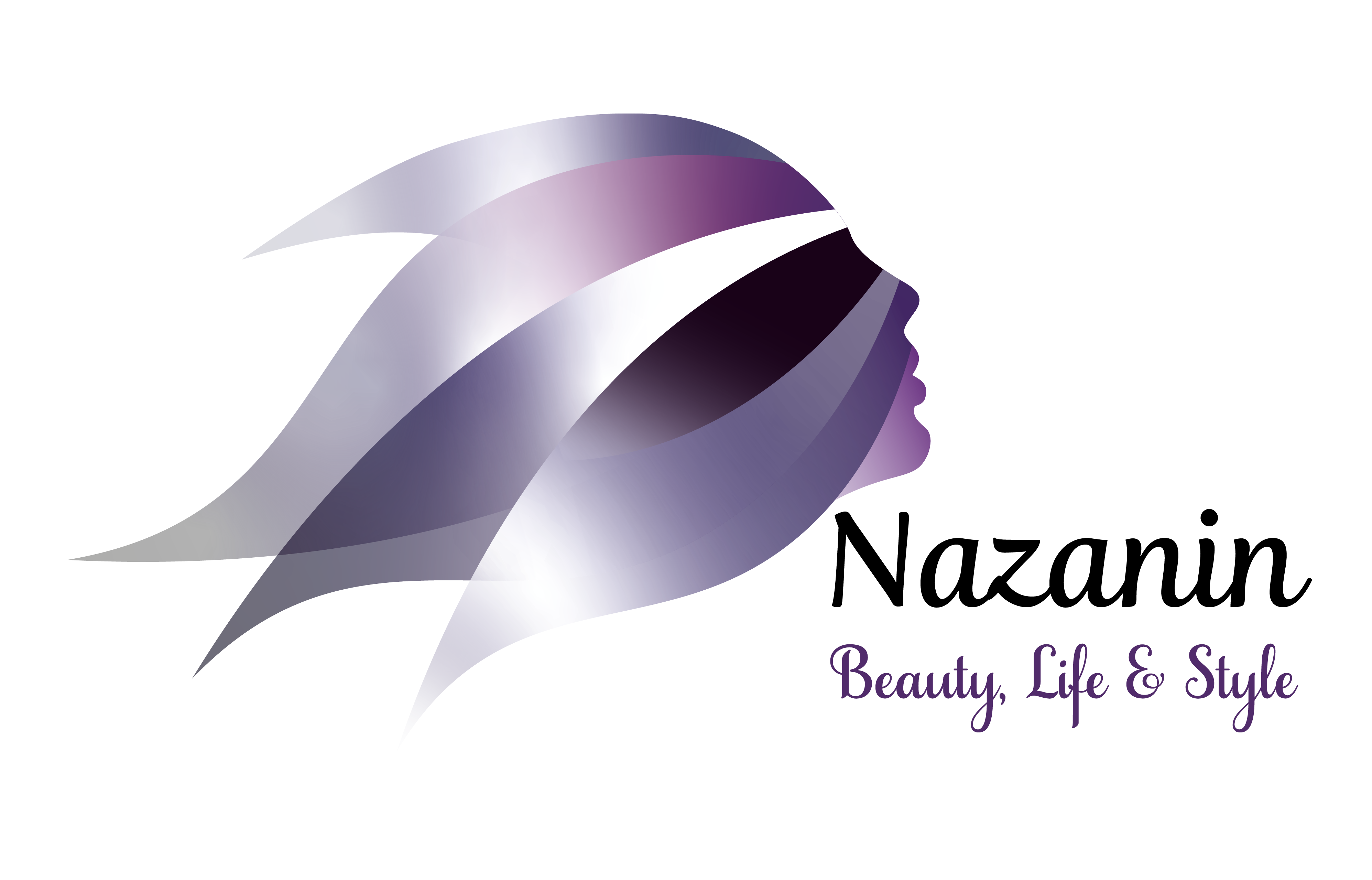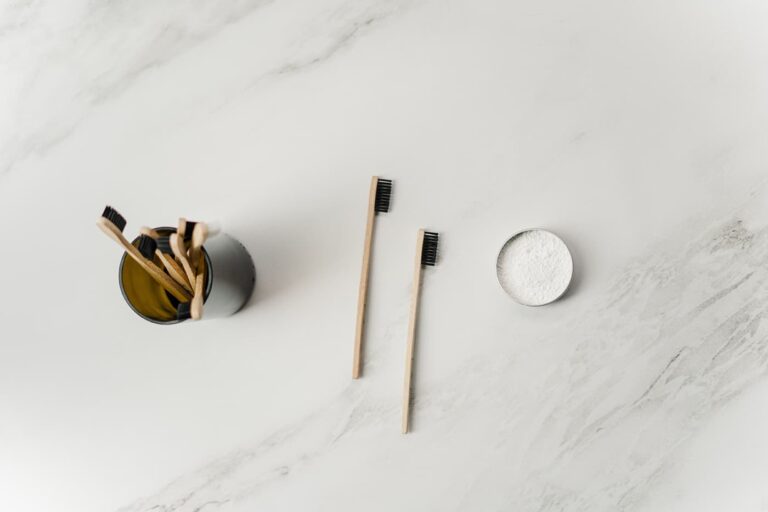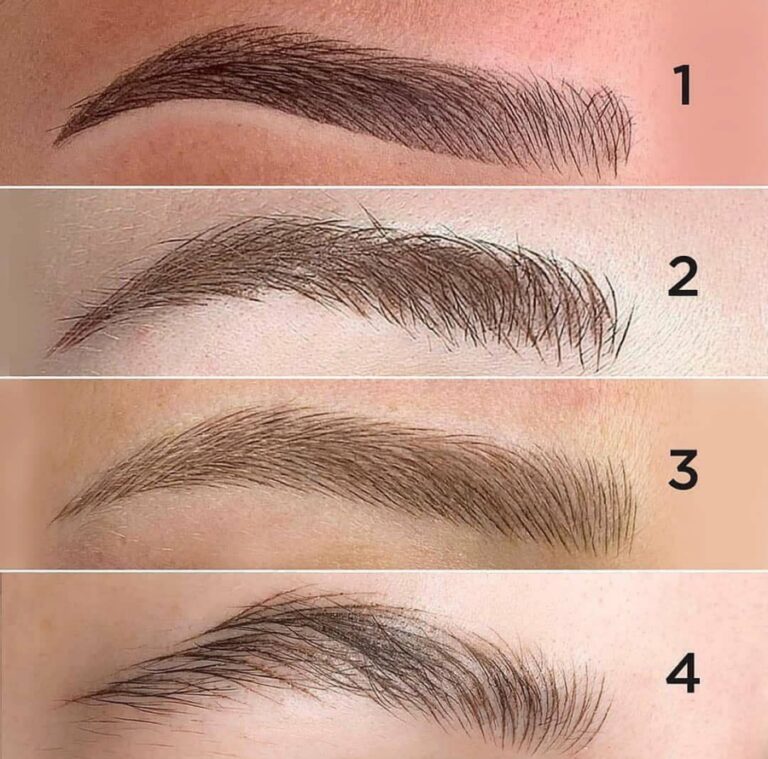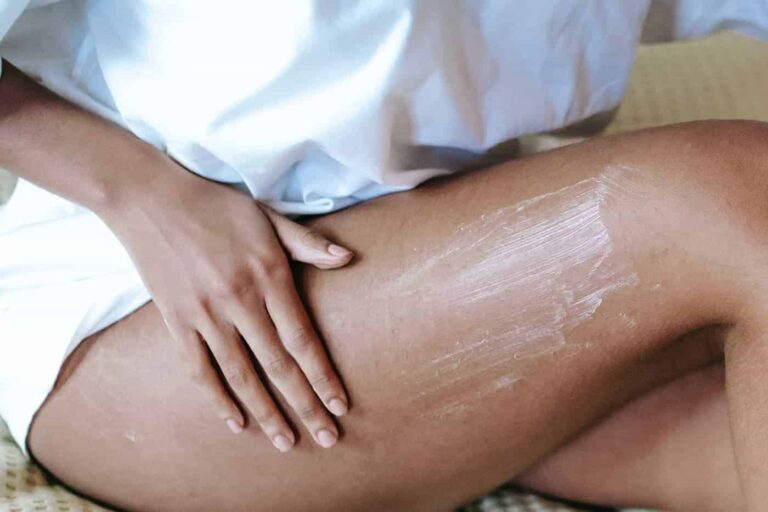What is the Eyebrows Threading:
Threading eyebrows/ face is a method of hair removal that originated in the Middle East and South Asia. It involves using a thin, twisted cotton thread to remove unwanted hair from the eyebrows and other facial areas.
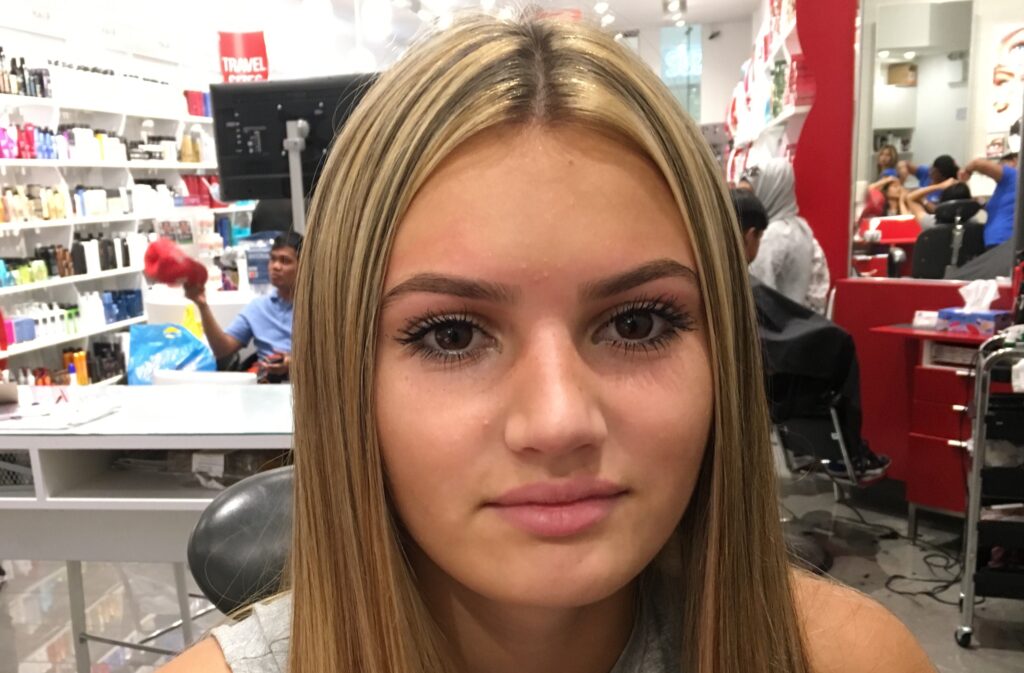
The process typically begins with the threading specialist holding the thread in their hands. They twist the thread several times to create a loop in the center, which is then used to trap and remove individual hairs.
During the procedure, the specialist precisely maneuvers the twisted thread over the skin, capturing and pulling out the unwanted hair from its follicle. This technique allows for a more precise and defined shape compared to other hair removal methods like waxing. The specialist can shape the eyebrows by removing hair from above, below, and between the brows to create a clean and well-defined arch.
Nazanin prefers and always recommends eyebrow threading because it provides precise control over hair removal and offers more defined results. It is generally considered safe and suitable for most individuals, including those with sensitive skin. Threading is also relatively quick, and the discomfort experienced during the process is often minimal.
Eyebrow threading is commonly available at our beauty salon. It’s important to choose a trained and experienced professional to perform the procedure to ensure a satisfactory outcome and minimize the risk of injury or irritation.
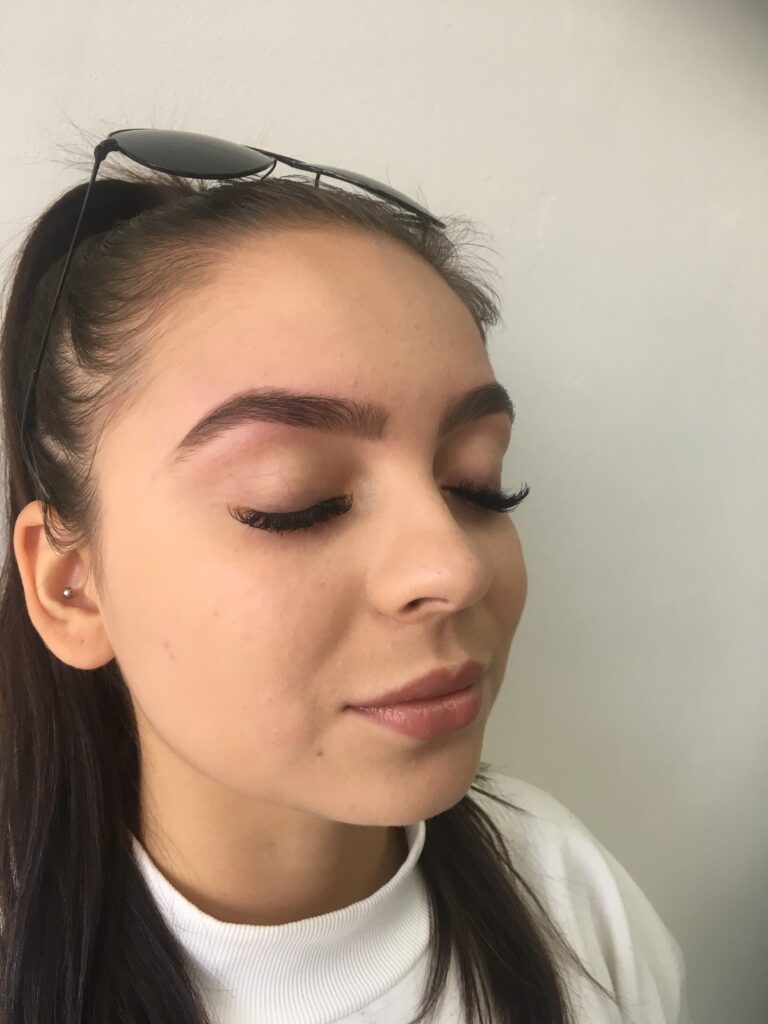
There are several benefits to eyebrow threading compared to other methods of eyebrow grooming
- Precise and Defined Shape: Threading allows for precise control over shaping the eyebrows. The threading specialist can remove individual hairs with accuracy, creating a well-defined arch and shape that enhances your facial features.
- Gentle on the Skin: Threading is a gentle method of hair removal that is suitable for individuals with sensitive skin. The process only targets the hair, minimizing the risk of irritation or damage to the surrounding skin.
- Longer-lasting Results: Compared to methods like tweezing, threading removes hair from the root, resulting in a longer-lasting effect. Threading can keep the eyebrows looking groomed and neat for several weeks.
- Quick and Efficient: Threading is a relatively quick procedure, especially for experienced threading specialists. The process of removing multiple hairs at once with a single thread allows for efficient hair removal, saving time during your grooming routine.
- No Chemicals or Products Required: Threading is a natural hair removal method that doesn’t require the use of any chemicals or products. This can be beneficial for individuals who prefer a more organic or chemical-free beauty routine.
- Suitable for All Hair Types: Threading can be performed on all hair types, including fine, coarse, short, or long eyebrow hair. It is effective in removing even the finest and smallest hairs that may be difficult to tweeze or wax.
- Minimal Discomfort: While everyone’s pain tolerance may vary, threading is generally considered to be less painful than waxing. The quick and precise removal of individual hairs can result in minimal discomfort during the procedure.
- No Risk of Burns: Unlike waxing, there is no risk of burns or skin damage with eyebrow threading. The absence of heated substances makes threading a safer option for those with sensitive or delicate skin.
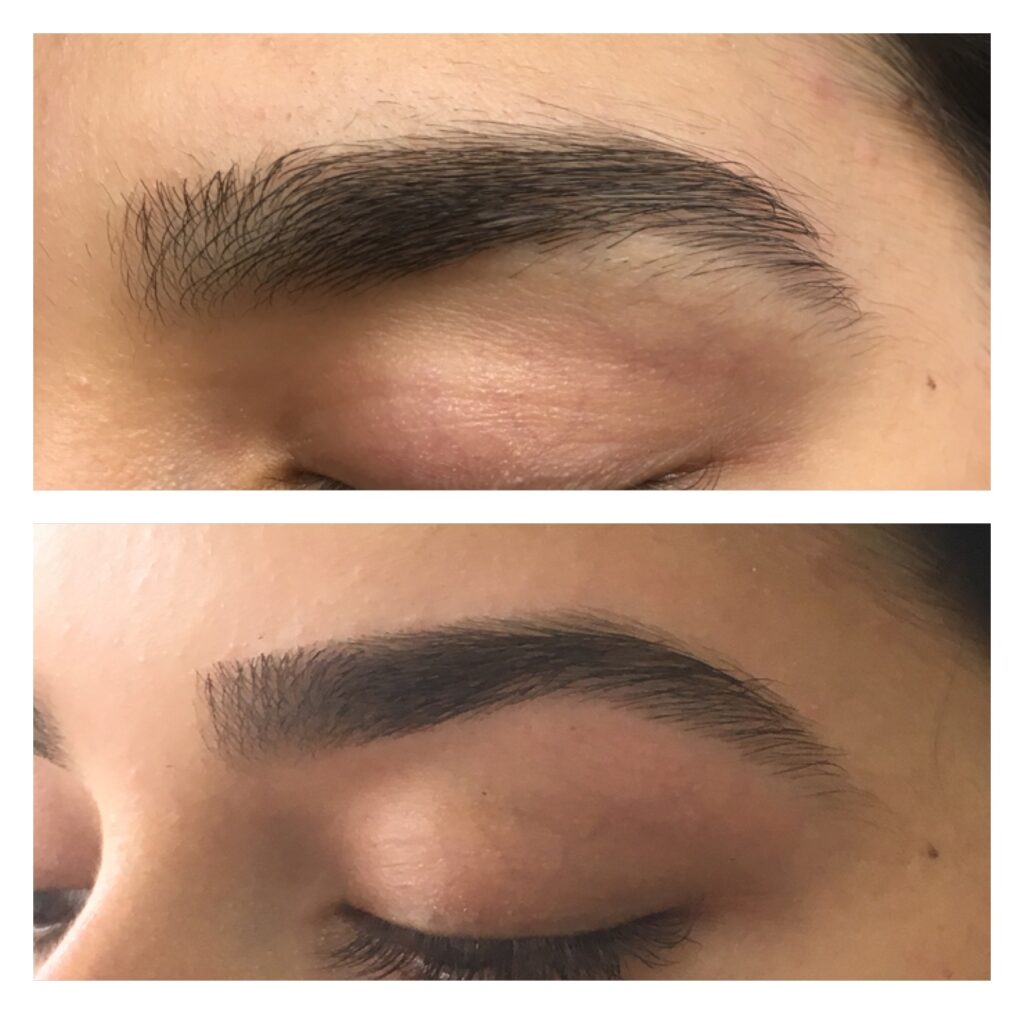
Before threading your eyebrows, there are a few things you can do to prepare
- Let your eyebrows grow: Avoid tweezing or waxing your eyebrows for at least two to three weeks before threading. This allows the hair to grow out sufficiently, giving the threading specialist more to work with and achieving better results.
- Cleanse your skin: Before your appointment, cleanse your face and eyebrows to remove any makeup, oils, or dirt. This helps create a clean surface for threading and reduces the risk of infection.
- Communicate your desired shape: Have a clear idea of how you want your eyebrows to be shaped. You can bring reference pictures or describe your preferences to the threading specialist. Clear communication ensures that you and the specialist are on the same page regarding the desired outcome.
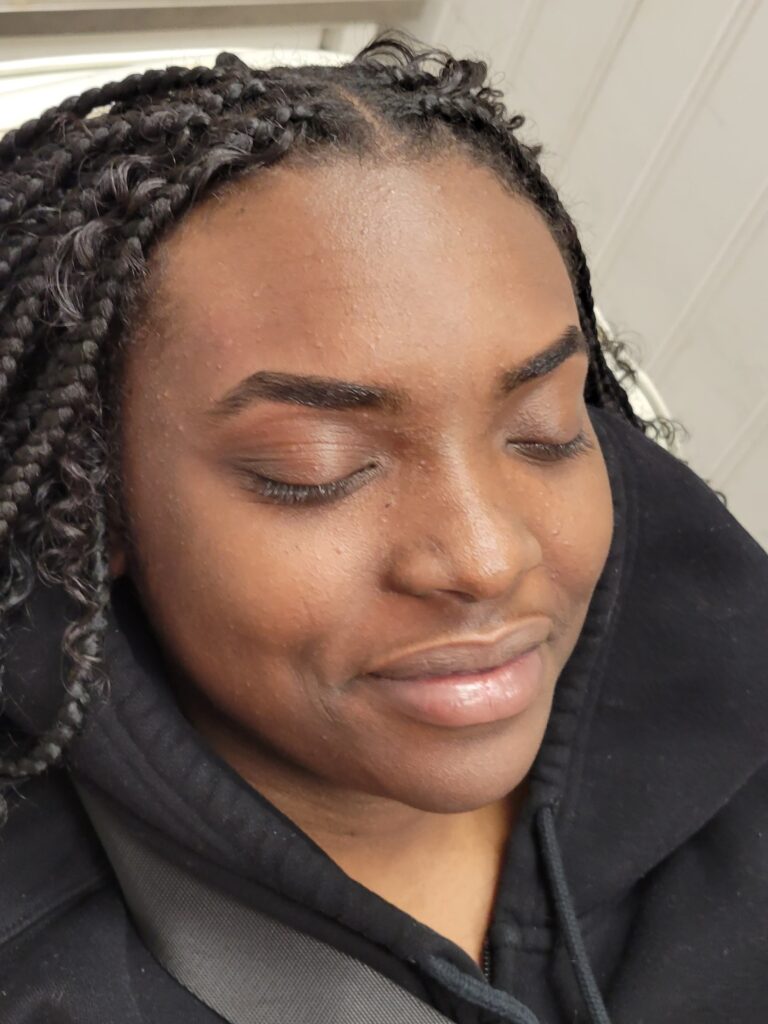
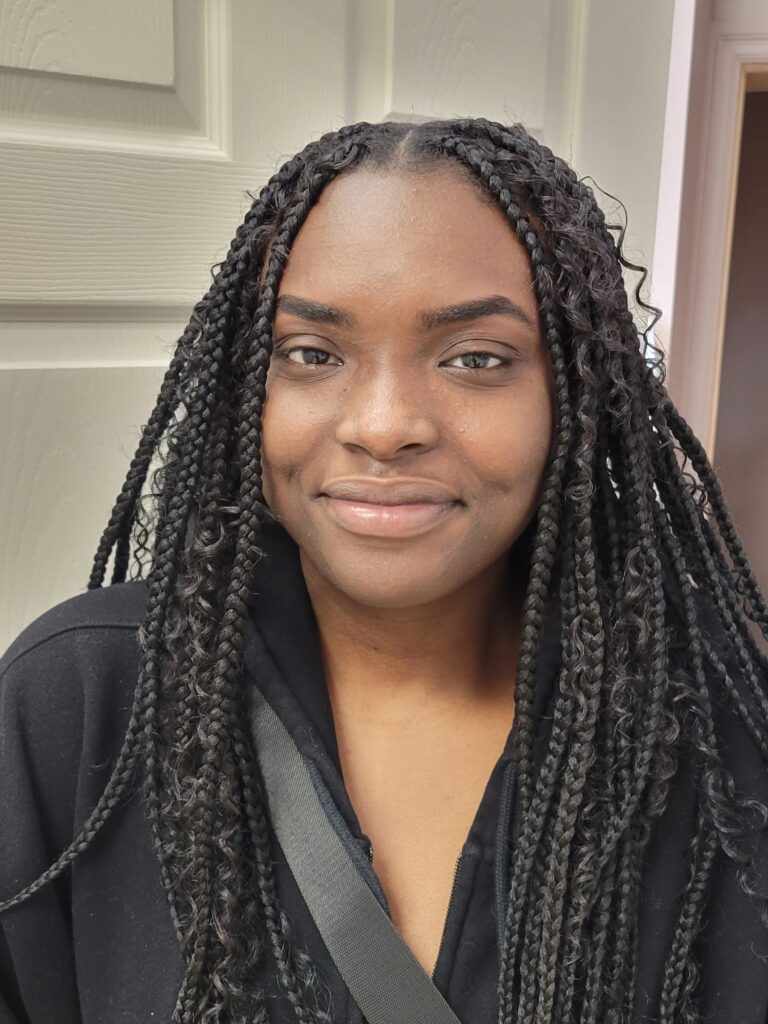
After threading your eyebrows, follow these guidelines for proper care
- Avoid touching or rubbing the area: After threading, your skin may be sensitive. Avoid touching or rubbing the threaded area to minimize the risk of irritation or infection.
- Apply a soothing gel or moisturizer: To calm the skin and reduce any redness or irritation, you can apply a soothing gel or moisturizer specifically formulated for sensitive skin. Look for products containing ingredients like aloe vera or chamomile.
- Avoid applying makeup: It’s generally recommended to avoid applying makeup to the threaded area immediately after the procedure. This gives your skin time to recover and reduces the risk of clogging the hair follicles.
- Avoid excessive sun exposure: Protect your freshly threaded eyebrows from excessive sun exposure, as the skin may be more sensitive. If you have to be outside, consider wearing a hat or using sunscreen to shield your brows.
- Follow the specialist’s aftercare instructions: The threading specialist may provide you with specific aftercare instructions based on your skin type and the extent of threading. Follow their guidance to ensure proper healing and maintain the shape of your eyebrows.
Remember, everyone’s skin is different, and individual reactions may vary. If you experience excessive redness, swelling, or discomfort that persists beyond a day or two, it’s advisable to consult a dermatologist or the threading specialist for further guidance.
Difference between threading and waxing eyebrows
Threading and waxing are two popular methods of eyebrow grooming, but they differ in several ways:
- Technique: Threading involves using a twisted cotton thread to trap and remove unwanted hair, while waxing involves applying a layer of warm or cold wax on the skin and pulling it off, along with the hair, using a cloth strip.
- Precision: Threading offers more precise control over shaping the eyebrows. The threading specialist can target individual hairs, allowing for a more defined and precise shape. In contrast, waxing removes hair in larger sections, making it less precise for shaping.
- Hair Removal: Threading removes hair from the follicle by pulling it out at the root. This can result in longer-lasting results compared to waxing, which removes hair from the surface of the skin. Waxing may leave some hair behind, requiring more frequent touch-ups.
- Discomfort: The level of discomfort can vary between threading and waxing depending on individual pain tolerance. Some people find threading to be less painful because it only targets individual hairs. However, others may find the quick pulling motion of waxing to be more uncomfortable.
- Skin Sensitivity: Threading is generally considered to be a gentler option for individuals with sensitive skin. The process does not involve the use of any chemicals or products, reducing the risk of skin irritation or allergic reactions. Waxing, on the other hand, involves applying wax on the skin, which may cause temporary redness or irritation, particularly for those with sensitive skin.
- Regrowth: Since threading removes hair from the root, the regrowth tends to be slower compared to waxing. With waxing, the hair typically grows back within a few weeks, while threading can keep the eyebrows looking groomed for a longer duration.
Ultimately, the choice between threading and waxing comes down to personal preference, skin sensitivity, and desired results. Some individuals may prefer threading for its precision and gentler approach, while others may opt for waxing if they prefer faster hair removal or have less sensitive skin. It’s important to consider your individual needs and consult with a professional to determine the best option for you.
Upper lip/ Mustache threading
Upper lip threading is a method of hair removal specifically targeting the hair on the upper lip area. Similar to eyebrow threading, it involves using a thin, twisted cotton thread to trap and remove unwanted hair.
Upper lip threading is a popular hair removal option for those who want to remove fine or coarse hair from the upper lip area. It is known for providing precise control over hair removal, resulting in clean and defined results.
Like eyebrow threading, upper lip threading offers several benefits. It is a gentle method of hair removal suitable for individuals with sensitive skin, as it only targets the hair and minimizes the risk of skin irritation. Threading allows for longer-lasting results compared to other methods like shaving or depilatory creams, as it removes hair from the root.
Before and after upper lip threading, it’s advisable to follow similar care guidelines as with eyebrow threading. Prepare by ensuring the area is clean and free of any makeup or products. After threading, avoid touching or rubbing the area, apply a soothing gel or moisturizer, and follow any specific aftercare instructions provided by the threading specialist
Full face Threading
Full face threading is a technique of hair removal that involves threading the hair on the entire face, including the eyebrows, upper lip, chin, cheeks, sideburns, and forehead. It is a comprehensive method of facial hair removal that can provide a smooth and hair-free appearance.
Threading specialists or estheticians who are trained and experienced in threading can perform full face threading. They have the necessary skills to maneuver the threaded cotton thread across different areas of the face, capturing and removing unwanted hair.
Before performing full face threading, it’s important to communicate your preferences and desired outcome to the threading specialist. They can customize the treatment based on your specific needs, ensuring that you are comfortable with the level of hair removal and the resulting shape and appearance of your eyebrows and other facial hair.
Full face threading is popular among individuals who prefer threading as their primary method of facial hair removal. It offers precise control over shaping the eyebrows and allows for thorough hair removal on various facial areas. Compared to other methods like waxing or shaving, threading can provide longer-lasting results as it removes hair from the root.
As with any facial hair removal procedure, it’s important to maintain proper skincare practices before and after full face threading to minimize any potential redness, irritation, or discomfort.
